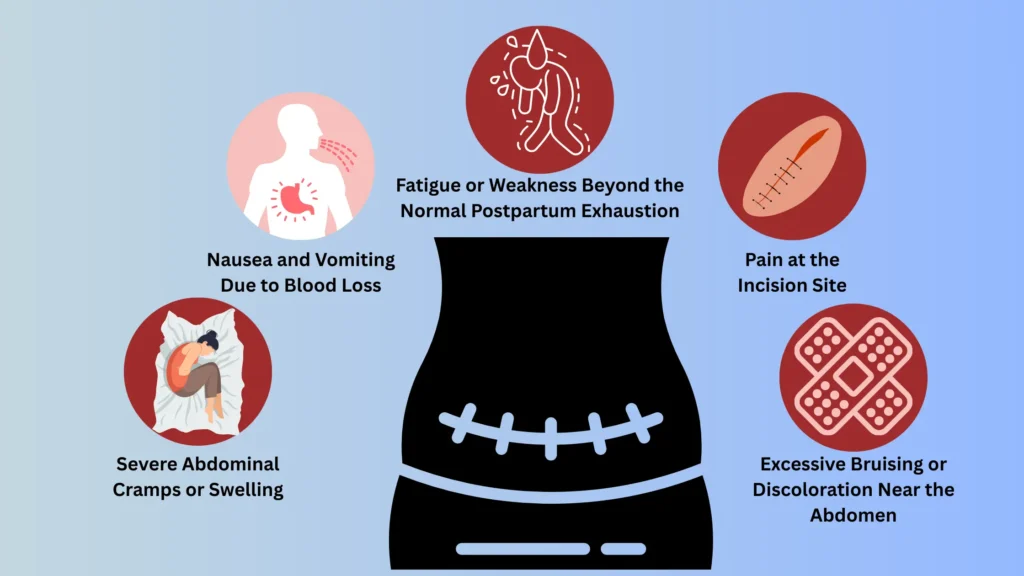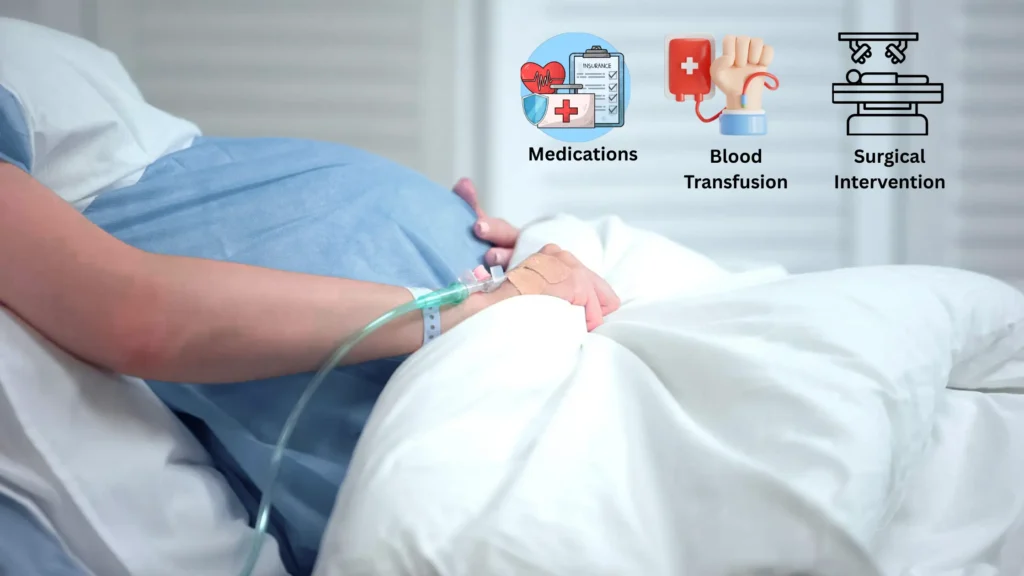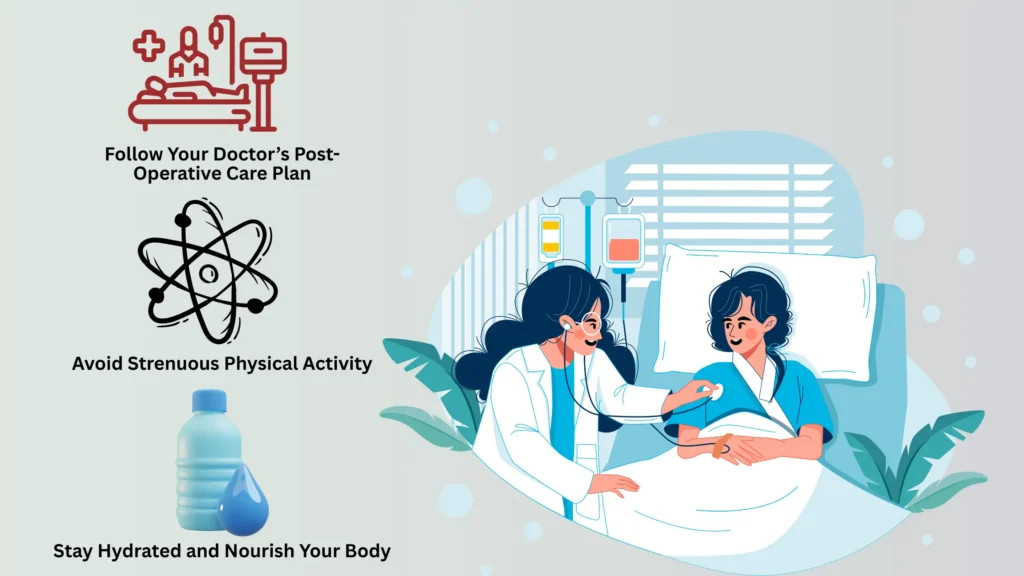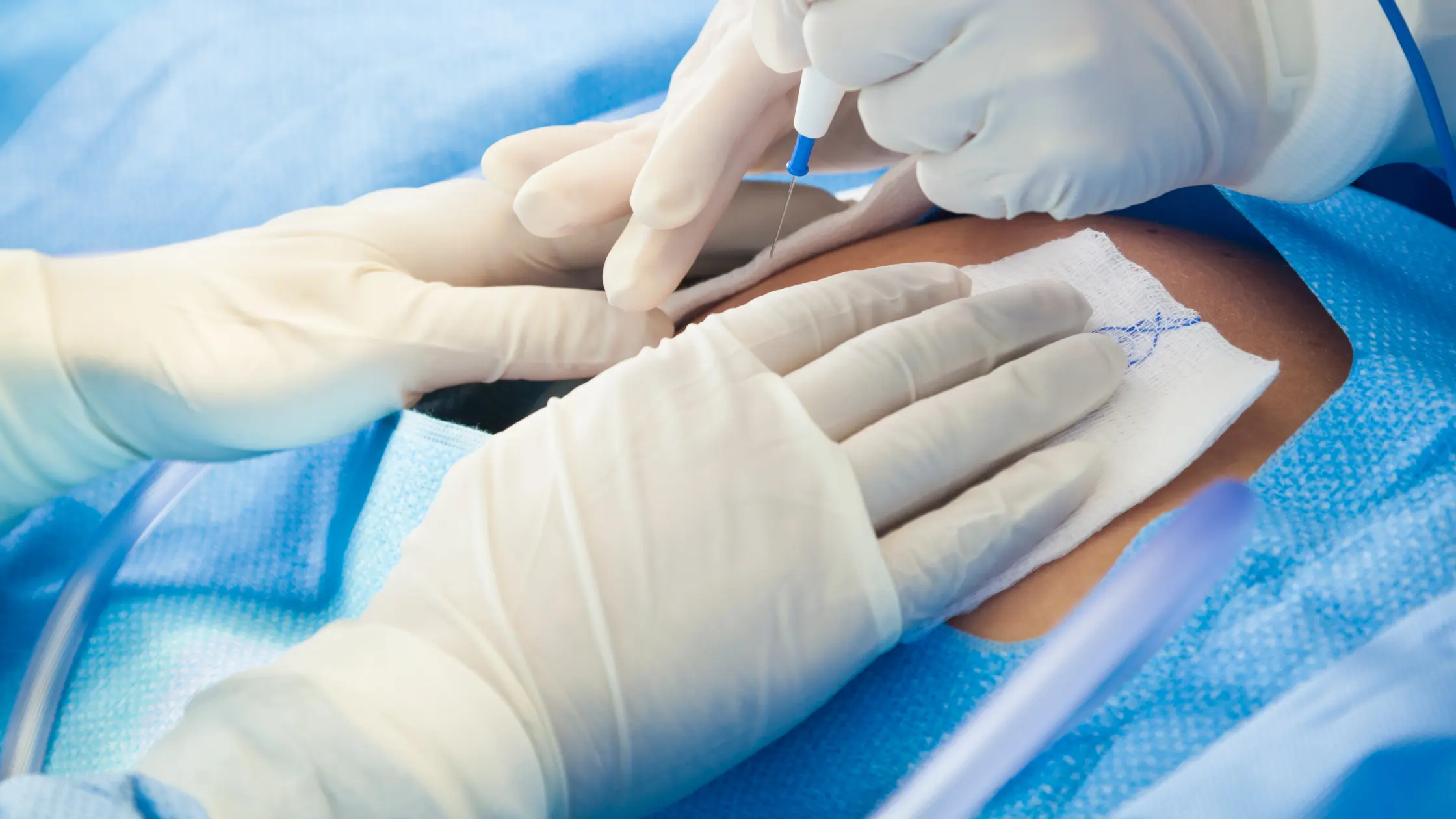Signs of internal bleeding after C-section are critical to understand for both the recovery process and the safety of the mother who has just undergone surgery. Although it is a common procedure, close observation is necessary for any abnormal signs or symptoms since any complications could be detected early. Here is an exhaustive guide to help you through what to expect, including symptoms, causes, and what to do when you suspect that you have internal bleeding following the cesarean section operation.
Table of Contents
- Understanding Internal Bleeding After C-Section
- Early Signs of Internal Bleeding After C-Section
- What Happens When Internal Bleeding is Not Detected?
- Identifying Symptoms of Internal Bleeding After C-Section
- Why Internal Bleeding After C-Section is Dangerous
- Treatment for Internal Bleeding After a C-Section
- How to Prevent Internal Bleeding After C-Section
- FAQs: Signs of Internal Bleeding After C-Section
- Final Thoughts: Signs of Internal Bleeding After C-Section
Understanding Internal Bleeding After C-Section

Internal bleeding is when blood has leaked within the bodEarly Signs and Symptoms of Internal Bleeding After C-Sectiony, and this is hazardous unless rectified immediately. With a C-section, women are likely to face complications such as bleeding since there is surgery involved in the process. Understanding the signs of internal bleeding after a C-section is crucial to ensuring timely medical intervention.
Causes of Internal Bleeding
Internal bleeding following a C-section could have many causes but some examples include the trauma that occurred during surgery operation itself, problems related to the vessels, and problems related to the healing process. The two most common ones possibly would be the following:
Uterine Injury or Rupture
Injury or rupture of the uterus happens when the uterus has been damaged inadvertently or because of the surgical issues during a C-section, triggering rupture. This may result in edema of the damaged region, causing bleeding, and it may even end up impacting the surrounding organs or blood vessels. Rupture of the uterus is not common but a very serious complication that may lead to immense loss of blood and result in the need for a hysterectomy. The symptoms are drastic stomach pain, bleeding, and shock indicators.
Blood Vessel Damage
Blood vessel damage is a complication during a C-section, where blood vessels around the uterus are accidentally cut or torn. This may cause substantial bleeding in case the vessels fail to clot. In other situations, bleeding could be seen in the abdomen where the vessels shed blood. It is of particular concern when the damage may be in the large vessels, such as the uterine or ovarian artery, leading to high and quick levels of blood loss. There could be a rapid heartbeat, feeling light-headed, and faintness.
Retention of Blood Clots
Blood clots that are retained occur when blood clots do not exit the uterus or abdomen following a C-section. This arises when the body cannot get rid of all the blood, resulting in discomfort, pain, and excessive blood loss. In case they are not removed adequately, the clots retained may cause infection or, worse still, complications. Among the symptoms related to retained clots are prolonged heavy vaginal bleeding, intense abdominal pains, and fever.
Placenta Complications
Placenta complications occur when the placenta doesn’t detach properly after birth or grows too deeply into the uterine wall (placenta accreta). This can cause heavy bleeding as the placenta may not detach naturally after a C-section, leading to uterine tears and significant internal bleeding. Placenta accreta may require surgical intervention to stop the bleeding and prevent life-threatening complications. Symptoms include excessive bleeding during or after delivery, difficulty removing the placenta, and signs of shock.
Early Signs of Internal Bleeding After C-Section

The signs of internal bleeding after c-section may vary from woman to woman, but some common indicators include:
Increased Abdominal Pain or Swelling
An increase in Abdominal distention or twinge over what you had before C-section may be a warning sign. Mild discomfort is normal, but constant or extreme pain may be a sign of problems such as internal bleeding, uterine trauma, or blood clot retention. This may be a sign that something is wrong, and in this case, the medical assessment should be done urgently when pain increases or swelling significantly increases.
Excessive Bleeding
Excessive bleeding after a C-section is a serious concern. While some vaginal bleeding is normal, heavy bleeding that continues or increases within the first few hours could indicate internal bleeding, uterine rupture, or placenta complications. If bleeding doesn’t slow down or becomes heavier than expected, it’s a sign the body can’t stop the hemorrhaging, requiring urgent medical intervention.
Fainting or Dizziness
Fainting or dizziness is a sign of significant blood loss. After a C-section, the body may struggle with the shock of surgery, and if bleeding occurs internally, it can lead to low blood pressure. Dizziness or fainting happens as the body tries to compensate for reduced oxygenated blood, signaling that immediate medical attention is needed.
Rapid Heart Rate or Shallow Breathing
Fast heart rate (tachycardia) or low breathing are manifestations of the body’s adaptation to blood loss. Body processes become more excessive when blood is lost, as the body tries to push more blood to the vital organs, the heart pumps at a higher rate, and a person tries to breathe in more air to obtain more oxygen. These symptoms could be signs of large volume lost blood and the intervention is needed as soon as possible.
What Happens When Internal Bleeding is Not Detected?
If the signs of internal bleeding after c-section are overlooked, the consequences can be severe. Unchecked blood loss can lead to shock, organ failure, and even death in extreme cases. This explains why early treatment and early diagnosis is important in regard to the safety of the mother.
Identifying Symptoms of Internal Bleeding After C-Section

In some cases, the signs of internal bleeding after C-section can be subtle, making it more challenging to detect. At the same time, the problem can be tackled at the initial stages without being acute once the characteristic symptoms are known. And here are the common signs that you should avoid:
Severe Abdominal Cramps or Swelling
Painful cramping or bloating in the abdomen following a C-section may indicate internal bleeding or complications involving the surgery. Although a certain degree of discomfort during the recovery period is natural, severe cramps or swelling that becomes worse may indicate such complications as retained blood clots, damage to the uterus, or its rupture. Pain accompanied by swelling could represent a sign of blood pooling in the abdominal cavity, and it should be assessed by a doctor.
Nausea and Vomiting Due to Blood Loss
Due to a large amount of blood loss after a C-section, nausea and vomiting may occur. When large volumes of blood are lost in the body, the body responds, leading to nausea. Such symptoms may occur together with dizziness, weakness, or fainting. When these signs are followed by additional signs of bleeding, it is better to seek medical attention because it is necessary to address the cause.
Fatigue or Weakness Beyond the Normal Postpartum Exhaustion
Fatigue or weakness is common after a c-section due to recovery from surgery. However, when this fatigue exceeds normal postpartum exhaustion or feels extreme, it could indicate internal bleeding. Blood loss reduces red blood cells needed for oxygen delivery, causing weakness, dizziness, and fatigue. This type of exhaustion differs from typical tiredness and may accompany other symptoms like fainting or rapid heart rate.
Pain at the Incision Site
Minor pain in the place of incision is expected because the body is healing itself, but more pain and extreme pain may mean complications such as infection, bleeding under the skin, or damaged tissues. In the case that the pain worsens, particularly when accompanied by redness, swelling or appearance changes in the incision, then consultation is necessary since it could indicate the possibility of internal bleeding or infection.
Excessive Bruising or Discoloration Near the Abdomen
Excessive bruising or discoloration near the abdomen or incision site can suggest internal bleeding. Blood may pool beneath the skin, causing bruising or darkened areas. While some bruising is normal after surgery, widespread or severe bruising that appears suddenly may indicate blood leaking into tissues. If bruising is significant or spreading, seek medical evaluation to rule out serious complications.
When you encounter any of the said defining symptoms, it is best to consult your healthcare professional to have a professional assessment done.
Why Internal Bleeding After C-Section is Dangerous
The risks of internal bleeding after a C-section can be heightened if the bleeding is not identified and treated promptly. Post-C-section internal hemorrhage might cause shock, a potentially deadly episode when the body organs are deprived of sufficient blood that contains oxygen. This may lead to irreversible damage to the vital organs such as the kidneys, heart, and brain.
Furthermore, if the internal bleeding is not treated, it may lead to complications regarding clotting, infection, and, in case the condition progresses, to hysterectomy.
Treatment for Internal Bleeding After a C-Section

If internal bleeding after a C-section is detected, immediate medical intervention is necessary. Depending on the extent of the bleeding as well as the cause of the same, therapy varies. Treatments that might be necessary include the following:
Blood Transfusion
Once the C-section has resulted in severe bleeding, a blood transfusion is needed. The blood contains a number of new cells on a constant basis, but when a lot of blood is lost to the body, insufficient new cells will be produced within a very short period of time in order to sustain normal functioning of the body. A transfusion replenishes the volume of fluid lost by the volume of blood loss, and it is a major factor in supplying oxygen to the organs. This is necessary in case of excessive blood loss when it normalizes the condition and prevents shock or organ damage.
Surgical Intervention
Internal bleeding caused by a C-section might require surgical remedies to correct the damage and correct the wayward blood vessels, especially in extreme cases. This has to be done when the bleeding is uncontrollable or when they are at risk of subsequent complications. Depending on the cause, surgery can include suturing uterine tears, burning of vessels, or blood clot removal. In the event of the discovery of uterine rupture or injury, the operating team will deal with the problem before it can result in too much blood loss and jeopardize the health of the mother.
Medications
Medications such as antibiotics or blood thinners may be prescribed depending on the situation. Antibiotics will be given if there’s an infection risk from an open incision or internal bleeding. Blood thinners manage clotting disorders or prevent abnormal blood clotting after surgery. Medications like uterotonic agents may control severe bleeding by helping the uterus contract and stop blood flow.
How to Prevent Internal Bleeding After C-Section

Although nobody can absolutely remove the risk, there are some measures to take that can minimize the chance of internal bleeding following a C-section:
Follow Your Doctor’s Post-Operative Care Plan
Following the post-operative plan from your doctor is important to a successful and safe recovery period after a C-section. In most cases, such a plan involves certain guidelines on the physical activity, wound management, and visit follow-ups. Guideline post-trawl can contribute to the perfect healing of your body with a few odds of complications, including adverse infection or excessive bleeding. Follow-up care resting instructions might include keeping the wound dry and clean, checking to see if there are indications of infection, and following scheduled visits every now and then to check on how well you are healing up. Do not hesitate to notify your doctor as soon as possible about any strange symptoms or fears that you may have.
Stay Hydrated and Nourish Your Body
A healthy diet and fluid intake are crucial to post-surgery recovery following a C-section. Being hydrated will contribute to normal blood circulation and avoid dehydration, which gets in the way of recovery. Nutrition is very important in repairing tissues, enhancing the immune system, and other aspects of energy. Consuming a well-balanced diet that has an ideal quantity of protein, vitamins, and minerals helps the body heal without depressing effects. The healing process can be accelerated through drinking a lot of water and consuming foods that contain sufficient nutrients, which enable the body to replenish the lost fluids when one loses blood.
Avoid Strenuous Physical Activity
It should be noted that after a C-section, we should not engage in vigorous physical activity during the post-delivery period. Suspending heavy objects, making drastic exercises, or otherwise involving some high-impact operations can cause the location of the surgery to be put under unnecessary strain and have the risk of injury and even bleeding inside or difficulties with the healing process. Take the advised actions of your doctor with regard to the safe timing of gradually returning to physical activity. In terms of healing, doctors usually prescribe that the patient do light walking and stretching, but nothing more stressful until he is ready to resume his normal daily activities.
FAQs: Signs of Internal Bleeding After C-Section
What should I do if I suspect internal bleeding after a C-section?
If you suspect internal bleeding after a C-section, you should immediately contact your healthcare provider or go to the emergency room. Early detection and treatment are crucial.
How soon after a C-section can internal bleeding occur?
It is possible to suffer internal bleeding right after surgery or during the first several days after the surgery. Being cautious at this kind of stage is critical.
Can internal bleeding happen even with proper care?
Yes, even with proper care, complications can still arise. This is why it’s important to monitor the signs of internal bleeding after c-section regularly, especially during the early recovery phase.
How is internal bleeding diagnosed after a C-section?
Diagnosis of internal bleeding usually requires tests and examinations conducted by various means, including blood tests, physical examinations, and plain tests such as ultrasounds or CT scans.
Final Thoughts: Signs of Internal Bleeding After C-Section
Understanding the signs of internal bleeding after a C-section is vital for any new mother. With early diagnosis and treatment, lives can be saved, and the recovery can become as hassle-free as possible. Any strange symptoms should also not be ignored and should be reported to a doctor in order to protect your health.
Let’s explore more on Pregnancy Must –
